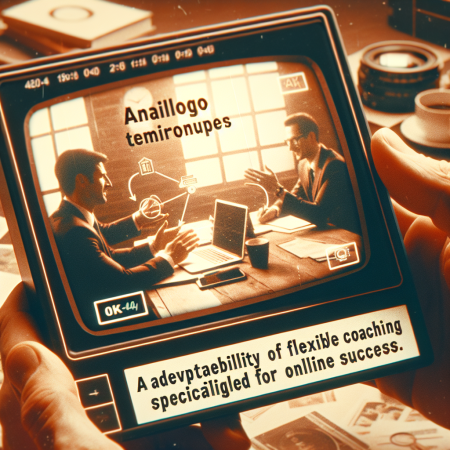Developing a Flexible Coaching Style for Online Success
Understanding Your Coaching Style
Self-Reflection for Authenticity
When I first began my coaching journey, I had to spend a lot of time looking in the mirror. Self-reflection isn’t just some cheesy advice—it’s honestly the backbone of developing a coaching style that resonates with clients. I took some quiet time, journaled my thoughts, and asked myself tough questions about what makes me tick. This introspection helped me find my authentic voice.
Real talk: understanding your coaching style means knowing your strengths and weaknesses. Some people are natural motivators, while others are more analytical. Embrace what you bring to the table! This self-awareness is crucial because it impacts how you’ll connect with your clients.
Lastly, I also discovered the importance of asking for feedback. I wasn’t too shy to reach out to colleagues and clients for their thoughts on my coaching style. Their insights were invaluable and allowed me to mold my approach further.
Building Rapport with Clients
The Power of Communication
Let me tell you, communication is everything! Once I nailed down my coaching style, I found that building rapport with my clients became a whole lot easier. You know, it’s like having a conversation with a friend rather than a formal session. I became intentional about fostering a comfortable environment where clients felt safe to share their goals and challenges.
I focused on listening more than talking. By genuinely listening to my clients, I was able to pick up on nuances I might have otherwise missed. This built trust and understanding, which translated into better outcomes. It’s crazy how a simple shift in approach can make such a difference.
Additionally, I maintained an open line of communication. I regularly check in with my clients, even beyond our coaching sessions. A quick message to say “Hey, how’s everything going?” goes a long way in solidifying that connection!
Flexible Techniques for Different Learners
Adapting to Individual Needs
Not every coaching session will look the same, and that’s perfectly fine! One of the biggest lessons I learned is to adapt my techniques based on my clients’ unique learning styles. Some people vibe well with visual aids, while others prefer hands-on approaches. I made it a point to ask them what works best for them from the get-go.
For instance, I once had a client who thrived with visual representation. To help them understand complex concepts, I created colorful infographics that simplified the information. It was rewarding to see their eyes light up when things clicked for them.
On the flip side, I work with others who appreciate dialogue-based learning. In these situations, I lean into storytelling and examples to illustrate points. Flexibility in my methods has made coaching not just about giving advice, but about crafting experiences tailored to my clients.
Setting Clear Goals and Expectations
Cascading Milestones
Here’s the deal: setting clear goals and expectations is crucial for success, both for me and my clients. I kick off each coaching relationship by sitting down with clients to discuss their dreams and aspirations. By the end of that first chat, we come up with some clear, actionable milestones together.
What I love about goal-setting is how it keeps everyone accountable. We break down the big goals into smaller, manageable steps. This way, clients don’t feel overwhelmed! Seeing progress, no matter how small, is a motivation booster. I’ve seen clients light up when they achieve these mini-goals!
Furthermore, I always check in on these goals throughout our sessions. It opens the floor for conversation about any challenges or shifts in their aspirations. Flexibility in adjusting these goals can lead to some incredible breakthroughs!
Embracing Continuous Improvement
Learning from Experience
I firmly believe that the learning never stops. As a coach, it’s essential not only to help clients improve but to also embrace my professional growth. After each coaching session, I take time to reflect on what went well and what could be better. This practice has transformed my coaching approach!
One thing I do is keep a journal specifically for this purpose. I jot down lessons learned, techniques that worked, and areas where I struggled. This reflection helps me evolve my coaching and ensures every client receives tailored support based on experiences.
Lastly, I engage in continuous education. There are tons of resources available—workshops, podcasts, and online courses. Staying updated on trends keeps my coaching fresh and relevant, ensuring I provide my clients with the best possible guidance!
FAQs
1. What is the first step to developing my coaching style?
The first step is self-reflection. Spend time understanding your strengths, weaknesses, and what makes you unique as a coach. This will help you find your authentic voice and style.
2. How do I build rapport with my clients?
Effective communication is key! Ensure you’re listening actively, engaging authentically, and maintaining an open line of communication. It’s all about making your clients feel comfortable.
3. Can I adapt my techniques based on different clients?
Absolutely! Adapting your coaching methods to suit the individual learning styles of clients is essential for their success. Always ask them what works best for them.
4. What should I focus on when setting goals with clients?
Establishing clear, actionable milestones is crucial. Make sure to break down larger goals into smaller steps to avoid overwhelming your clients. Celebrating small wins keeps motivation high!
5. How can I improve as a coach?
Embrace continuous improvement! Reflect on your sessions, learn from experiences, and stay updated with the latest coaching trends. Never stop learning and growing!
Related Content
- 10 Steps to Launch a Profitable Coaching Business from Scratch
- The Key Elements of a High-Performing Newsletter
- How To Balance High-Tech and High-Touch in Online Coaching
- The Top Email Marketing Tips for Driving Traffic to Your Website
- How To Create a Diverse Content Portfolio That Keeps Readers Engaged


